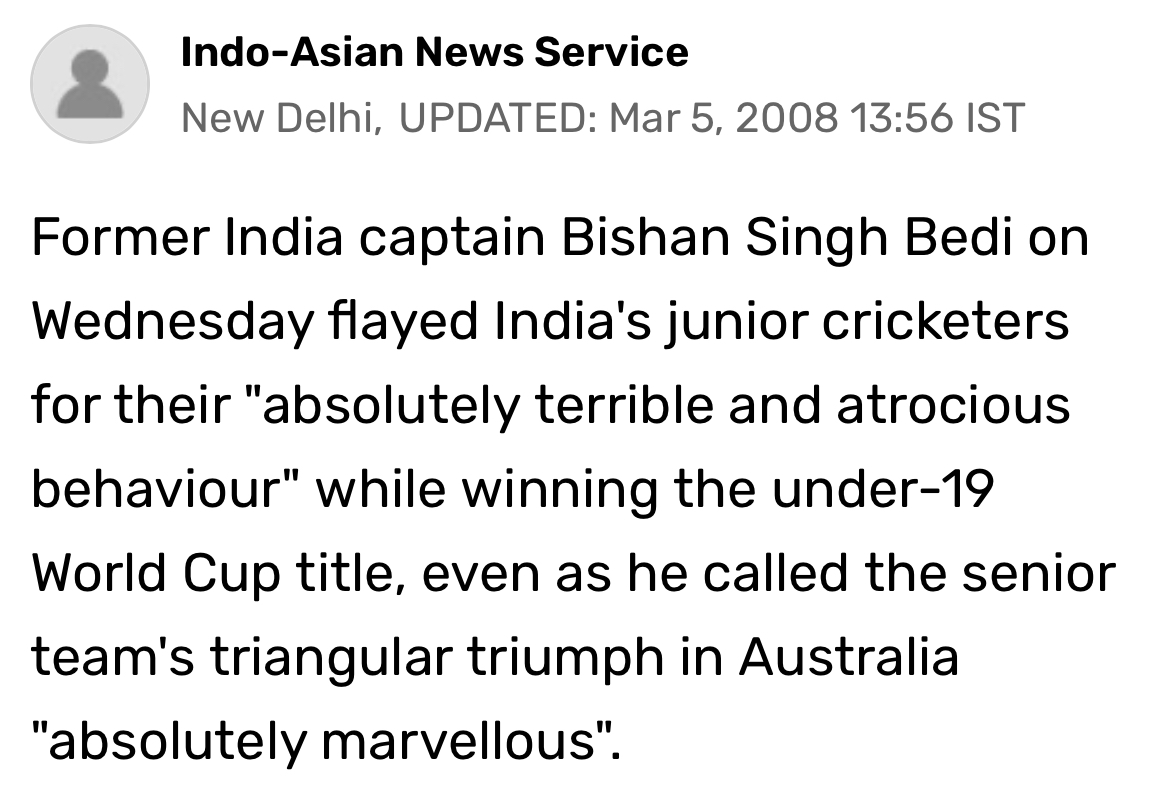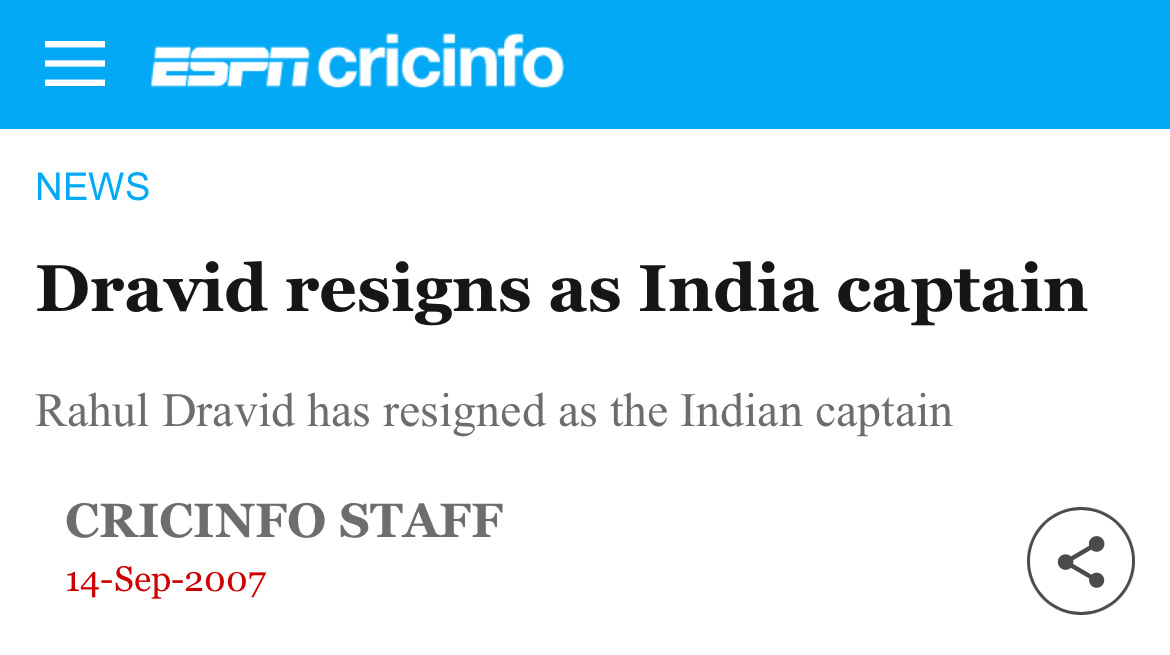As India lift the T20 world cup, a Virat-Dravid story for the ages
It took the Indian cricket team 17 years to recoup the T20 world cup. As the dramatic victory sinks in, Court Jester steps out of the courtroom to reflect on an unusual partnership in Indian cricket.
Image Courtesy: NDTVSports
When the dust begins to settle and the euphoria dies down, we will see that there are many protagonists in this story but only a few tales worth retelling.
The South African cricket team- despite their resource constraints and a perpetually tensed social fabric- emerged as the most consistent team of the tournament. They are not chokers, theirs is a beautiful unfinished story of this game which lends it character. The day they cross the finish line will be a very special day not only for them, but also for cricket.
There’s Jasprit Bumrah, who has now firmly lodged himself next to the likes of Wasim and McGrath. He will win more cups, he definitely should. What makes him special is he’d win those with an endearing smile, and not with an angry roar or a scowl. This country worships Mahendra Singh Dhoni for his calmness- Bumrah’s Zen flies under the radar and defies replication.
There’s Rohit Sharma- the thin, nervous-looking boy of the inaugural T20 world cup who, in the September of 2007, eked out a skilful and courageous half century against a fiery South African pace battery to take his team to the semi-finals. 17 years later, against the same opponents, he willed his way to a T20 world cup victory. His is a story of patience, longevity and leadership devoid of cosmetics; it’d require paeans of its own.
But the story that I want to recount is of two gentlemen you will never expect to be in the same room. It’s the story of an angry, brash, overzealous boy who wanted to win the world at age 19, and of another man who was born with caution and was synonymous with stability. It’s the story of Virat Kohli and Rahul Dravid.
In the first quarter of 2008, when a 19-year-old Virat Kohli won the U-19 world cup, all eyes turned towards him. It was not because he had led the team to a world cup, it was because of how he had done it. In 2008, IPL was yet to become a phenomenon; Indian cricketers were not the big brothers on the field as we know them to be today. Virat had sledged, shouted and angrily fist-pumped his way to the world cup. Per most pundits, it all seemed, for the want of a better word, ‘unIndian’.
To top it all, in the wake of the victory, Kohli gave an interview which raised many eyebrows. ‘I have a goal set for myself’, he had said. ‘I want to play for India, I want to score 10,000 international runs. I know what I want and come what may, I will achieve it one day’. Nobody in Indian cricket, not even the mighty Sachin Tendulkar, spoke like this. We believed in humblebrags, not boisterous statements of guaranteed success.
Rahul Dravid, back then, had just ended a rocky stint as the Indian captain. In one of his public speeches, he made it a point to address Virat’s brashness. ‘Our U-19 cricketers need to check their aggression. While confidence is good, overconfidence may be unwarranted. They still have a long way to go before they play for India.’ In hindsight, it was an epoch-making event in Indian cricket- one school of cricket was replacing the other; the very pioneers of these schools, Dravid and Kohli, were at a flashpoint. In those days, I used to get my cricket information through a monthly magazine. India had just won the T20 world cup, and I was thrilled at the prospect of a young iconoclast standing up to Dravid’s conservatism.
Within a couple years of this apparent hostility, Dravid and Kohli were representing India together at the highest level. One was ending a phenomenal career of gentle grit, the other was bullying his way to the top. They were polar opposites. They did not belong in the same dressing room.
Over the course of the next decade, Virat did, well, Virat things. I need not bore you with the details- he was, quite rightfully, the ICC cricketer of the decade. In 2016, Virat tweeted this picture which you see at the top of this post- it was juxtaposed against another image of Virat being interviewed by Dravid during India's tour of Australia in 2014-15. ‘I guess dreams do come true’, the tweet said.
In 2021, Virat’s stint as India captain came to a dramatic end. It coincided with Rahul Dravid’s appointment as the head coach of the Indian cricket team. The two men were together in the dressing room again, albeit these were not the same men who had parted ways in 2011.
In between, Rahul Dravid had played and lost in the IPL, coached the U-19 team and spent a lot of time building cricket infrastructure in India. One can assume that by 2021, Dravid had understood, and perhaps reconciled with the fact that cricket, as he knew it, had changed for good. There was hardly any place for gentleness; silence in the face of sledging was submissiveness. In 2021, he came to Virat’s dressing room.
But here lies, dear readers, the O. Henry twist in this story- In 2021, Virat Kohli was not the same person who had entered Rahul Dravid’s dressing room in 2008. The mythical purple patch was a thing of the past; Virat had now seen failures and the lows. Years of work and pressures of captaincy had his beard greying. He was now more agreeable to the frequent defeat in sports. He now understood Dravid better.
Other than pictures and videos from practice nets and live matches, nothing very substantial has been documented of their dressing room relationship in the last two and a half years. In October 2022 in a world cup game against Pakistan, when Kohli hit two sixes at the MCG to snatch an impossible victory from the jaws of defeat, we saw Rahul Dravid grind his teeth and throw his arms in the air. Kohli, on the other hand, won the game, closed his eyes and looked up in gratitude. The transition was complete. The man had learnt the ways of the boy. The boy had become a man.
Sports is ephemeral. Success and defeat is transient, and by all means, unimportant. Last night, as India won its second T20 world cup, life in cricket had come a full circle for Virat as well as Dravid. While collecting his player of the match trophy, Virat appeared subdued and uncharacteristically reflective- this ability to stop and reflect has come to define him in the last couple of years. He announced his T20I retirement and walked away with a smile, like Dravid would have had he won the 2007 ODI world cup in the Caribbean. That world cup was the lowest point of Dravid’s career, and 17 years later, here he was again, in the same islands, in another world cup, but now a world champion.
In the final hours of the day, after India had collected the world cup trophy, Virat walked up to Dravid and handed him the trophy. Dravid took the trophy, ground his teeth and cast it high in the air, just like a young Virat Kohli had done with his U-19 world cup trophy in the March of 2008.








The journey of a lad to a man and then a GOAT couldn't have been more poignantly expressed, but what makes it more engrossing, is it's intertwined narration with the WALL's own re-discovery from a silent performer to one who openly showed emotions, when it mattered most. Wish both could've continued for some more time atleast till we bring home the WTC, the one cup which is still missing in our proud cabinet. I know the GOAT will continue till he achieves it but, we would miss the stoic presence of RD at the head coaches desk at the ground. May God Bless them both
Role reversal at the expense of experience.
Will always be enigma to me how Kohli never got down well with Kumble, the coach, even after having played under and with him at RCB like Dravid